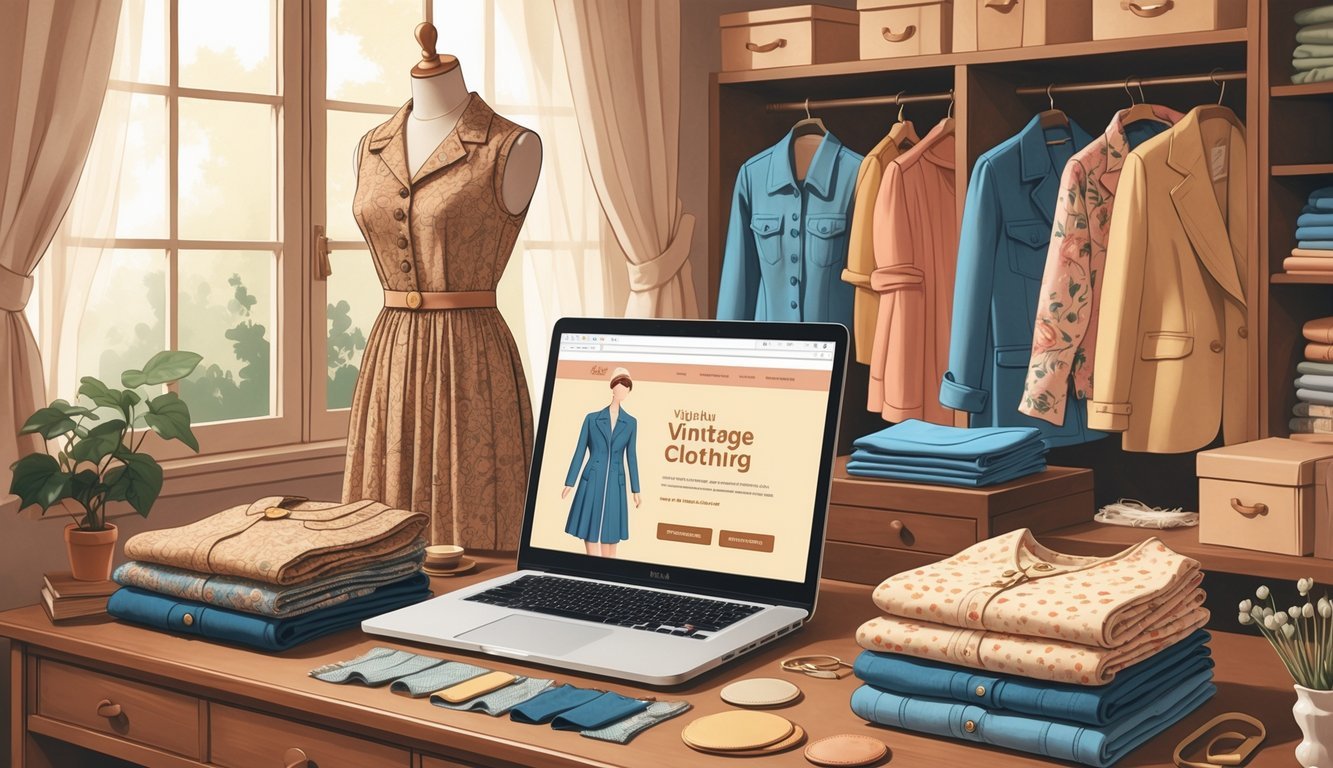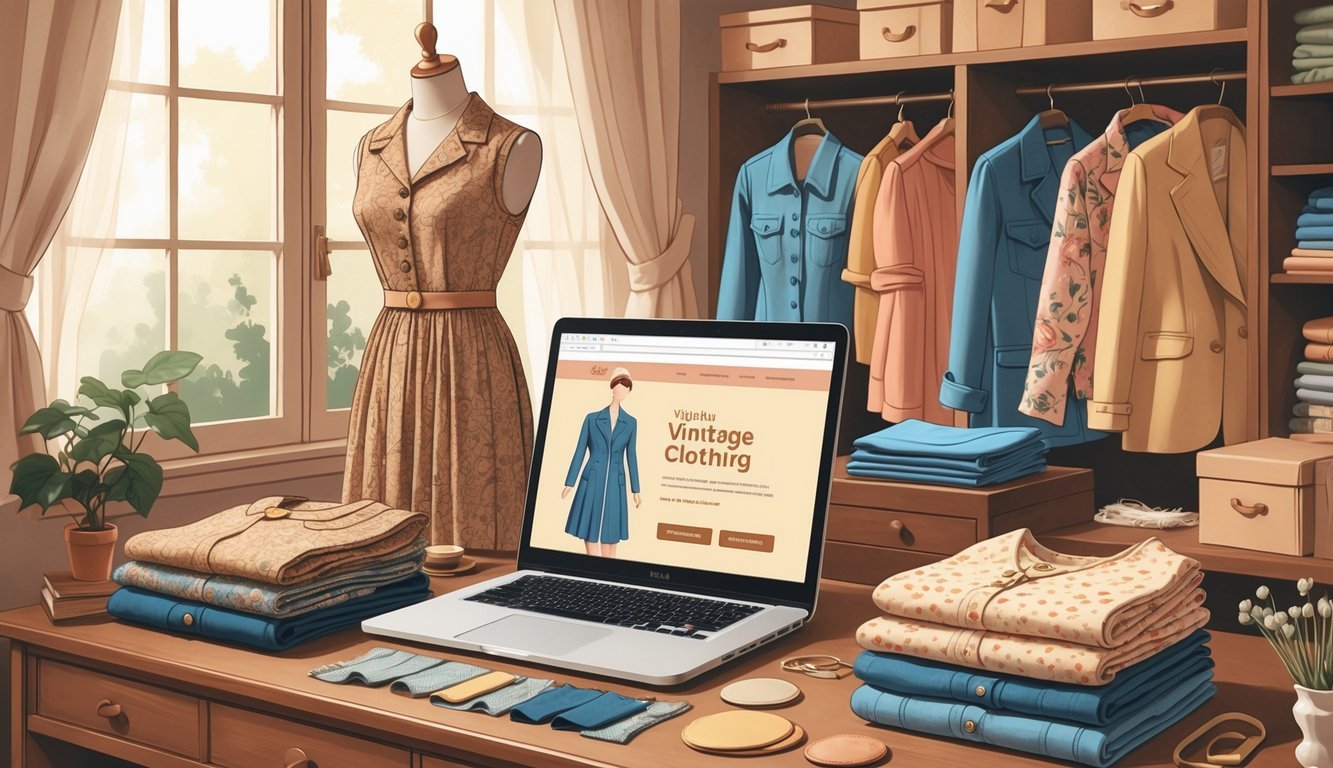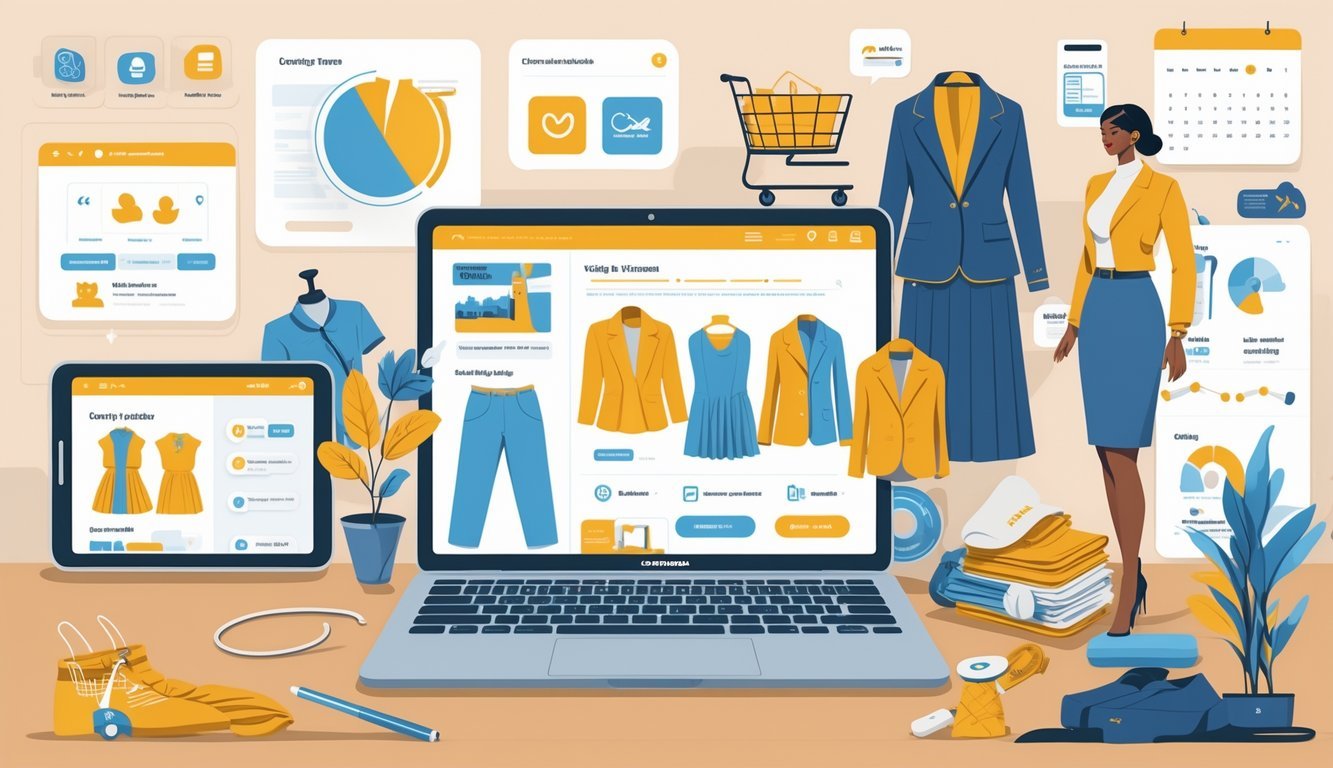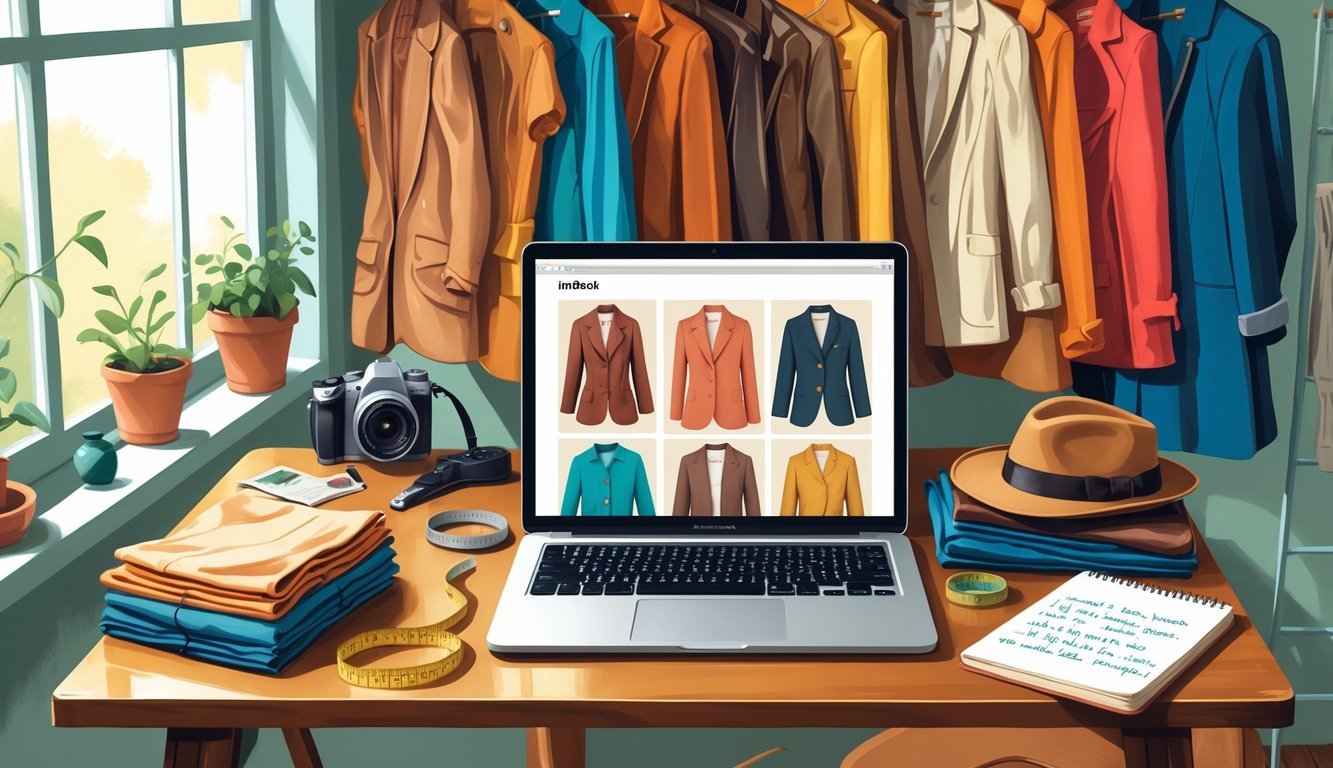Physical Address
304 North Cardinal St.
Dorchester Center, MA 02124
Physical Address
304 North Cardinal St.
Dorchester Center, MA 02124
Selling vintage clothing online allows individuals to monetize unique wardrobe items globally through platforms like Etsy, eBay, and Depop, using effective presentation and pricing strategies.

Selling vintage clothing online is a fun way to turn your closet treasures into extra cash.
Maybe you have just a few unique pieces, or maybe your whole wardrobe is a time capsule—either way, you can reach buyers all over the world on sites like Etsy, eBay, or Depop.
If you want your items to stand out, picking the right platform and presenting your clothes well makes all the difference.

You don’t have to be an expert to start selling.
Just put in a little effort with clear photos and honest descriptions, and you’ll attract buyers who appreciate vintage style.
Selling online gives you control over your prices.
You can even turn it into a small business if you feel like growing.
The best place to sell depends on what you own and who you want to reach.
Some sites charge fees, while others get your stuff in front of more people.
If you learn the basics, you’ll find the process easier—and a lot more profitable.

Start by picking quality vintage pieces people actually want.
Figure out where to find clothes that fit your style and budget.
Keep an eye on trends to help you choose items that will sell.
Choose clothing that looks good, is in solid condition, and has a story behind it.
Go for unique designs, well-known brands, or styles from popular decades like the ‘70s or ‘90s.
Always check for damage—stains or tears can be dealbreakers.
Minor wear is fine, but skip anything that needs big repairs.
Pick sizes that are standard or easy to wear.
That way, more people can buy them.
Fast fashion and super common items don’t usually sell well.
Instead, focus on standouts like leather jackets, vintage band tees, or retro dresses.
These pieces usually sell faster and bring in more money.
Thrift stores and secondhand shops are treasure troves if you visit often.
Stock changes a lot, so pop in regularly.
Look out for sales or discount days to score better deals.
Online resale sites and local community sales can be goldmines too.
If you make friends with other vintage sellers, you might hear about hidden gems before anyone else.
Stick to your budget, though.
Don’t just buy for the sake of having more inventory.
It’s better to have a few solid pieces that really fit your brand or style.
Trends can guide what you list for sale.
Lately, oversized jackets, retro sportswear, and ‘90s fashion seem to be everywhere.
Check what’s trending on social media, fashion blogs, and resale platforms.
Pay attention to colors, patterns, and fabrics that buyers want.
Trends change quickly, so don’t stock up too much on any one style.
Mix classic vintage with trendy pieces to keep your shop fresh.
That way, you’re more likely to attract a wider range of buyers.

You’ll have the most success selling vintage clothing online if you pick the best platforms and use smart strategies.
Know where your buyers shop, build your brand, and present your clothes in a way that grabs attention.
You’ve got a bunch of options for selling vintage.
The most popular marketplaces are eBay, Depop, Etsy, Poshmark, and Vinted.
For luxury or designer pieces, try Vestiaire Collective, Rebag, Grailed, or Fashionphile.
These sites focus on secondhand fashion and designer bags.
Your brand helps you stand out from the crowd.
Use consistent photos, a clear style, and honest descriptions.
Show a bit of your personality in your listings.
The vintage community loves sellers who are real.
Share your new finds, styling tips, or customer reviews on Instagram or Pinterest.
That builds trust and encourages buyers to come back.
Chat with your followers and reply quickly to questions.
When buyers see that you care, they’re more likely to shop with you again.
Photos matter—a lot.
Take bright, well-lit shots from different angles.
Include measurements, fabric info, and mention any flaws.
Price your items based on their condition, brand, and how much people want them.
Check similar listings on Poshmark or eBay to stay competitive.
Offer bundle deals or discounts on slow sellers.
Use keywords like “vintage,” “designer,” or “retro” in your titles so buyers can find your listings.
Update your shop regularly to keep things interesting and catch shoppers’ eyes.

Selling vintage clothes means thinking about pricing, where to sell, and how to find your buyers.
You’ll also need to decide if you want to sell items one by one or in groups.
If you know how to attract interest—or even sell to production companies—you can really boost your sales.
Check for brand labels, materials, and overall condition.
Research prices for similar pieces on popular selling sites.
Condition, rarity, and demand all matter, so compare with recently sold listings.
Sites like Etsy, Depop, and eBay are all solid choices for vintage clothes.
Each one has different fees and audiences.
Pick the platform that fits your items and your comfort with sales and shipping.
Selling one by one usually brings higher prices, but it takes more time.
Bulk sales move inventory faster, though you might earn less per item.
Think about your time and what you want out of selling.
Use clear, bright photos from multiple angles.
Write honest, detailed descriptions with measurements.
Include keywords buyers search for, like style, era, and brand.
Share your store and listings on social media like Instagram and TikTok.
Join vintage clothing groups and online communities.
Collaborate with influencers who love vintage style.
Start by checking out local film and theater costume departments.
Reach out to them directly—don’t be shy—send over a simple catalog with prices.
You could also offer a try-on limit or give a bulk discount.
That little extra incentive might just make your clothing stand out to them.